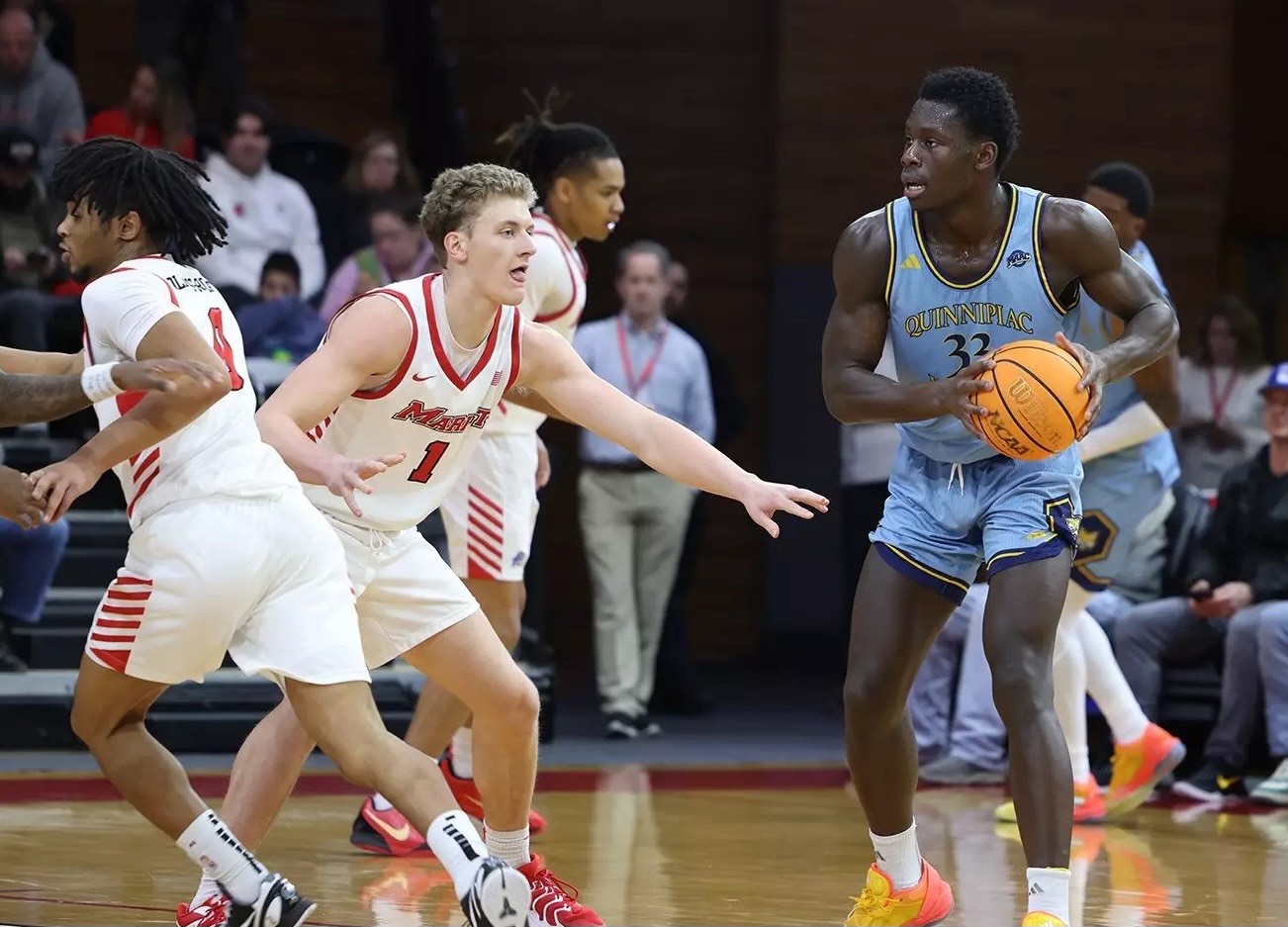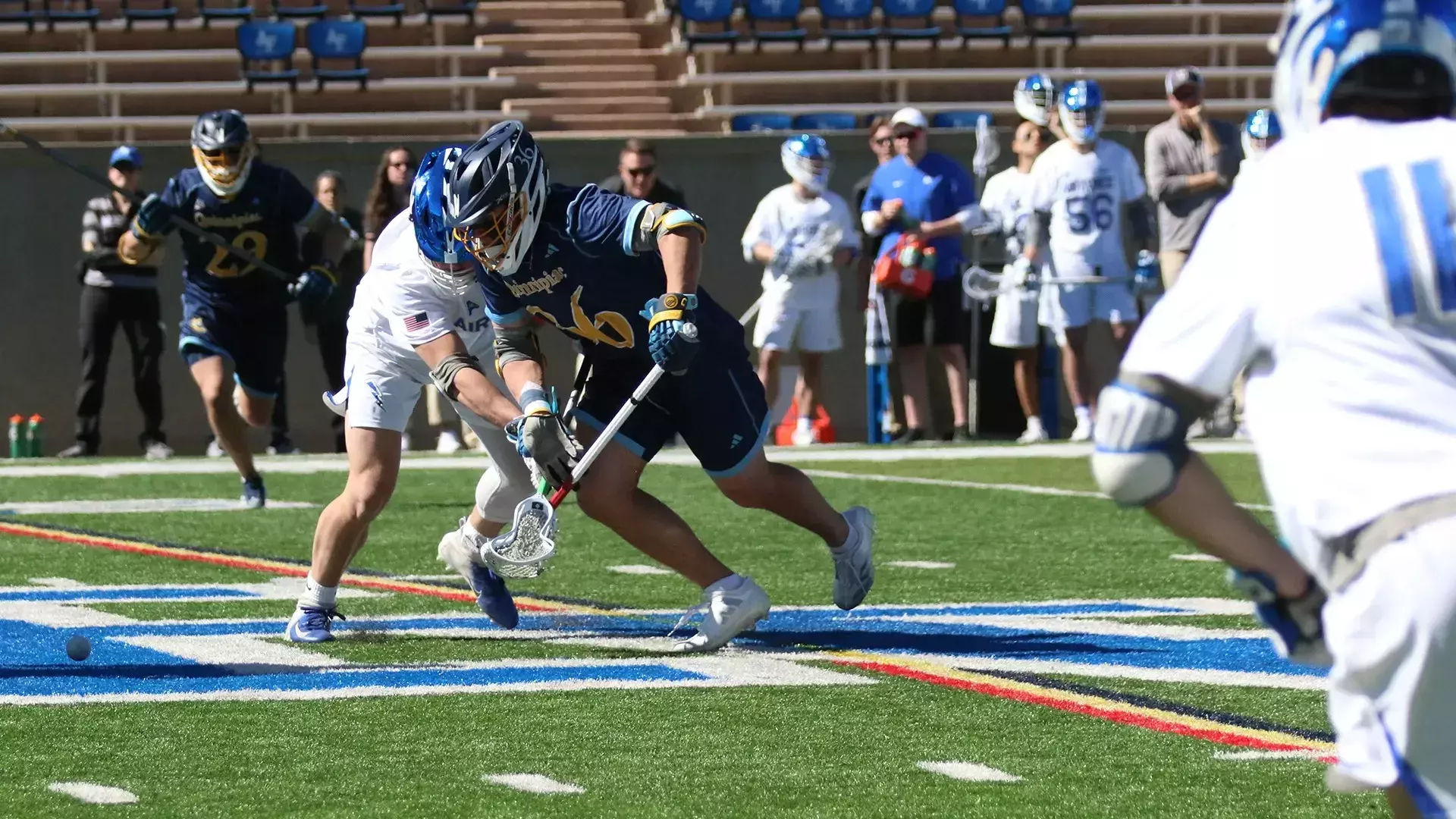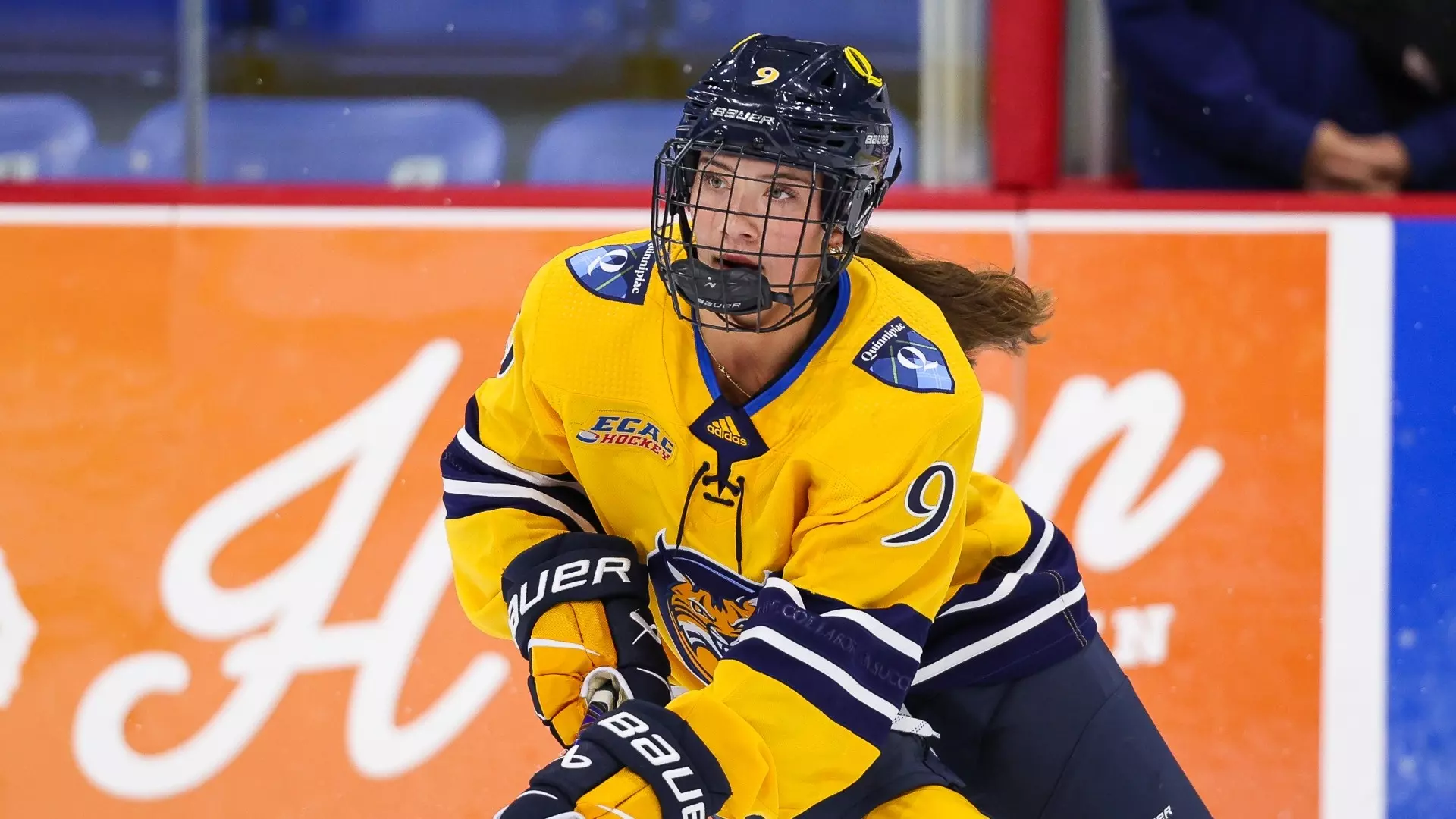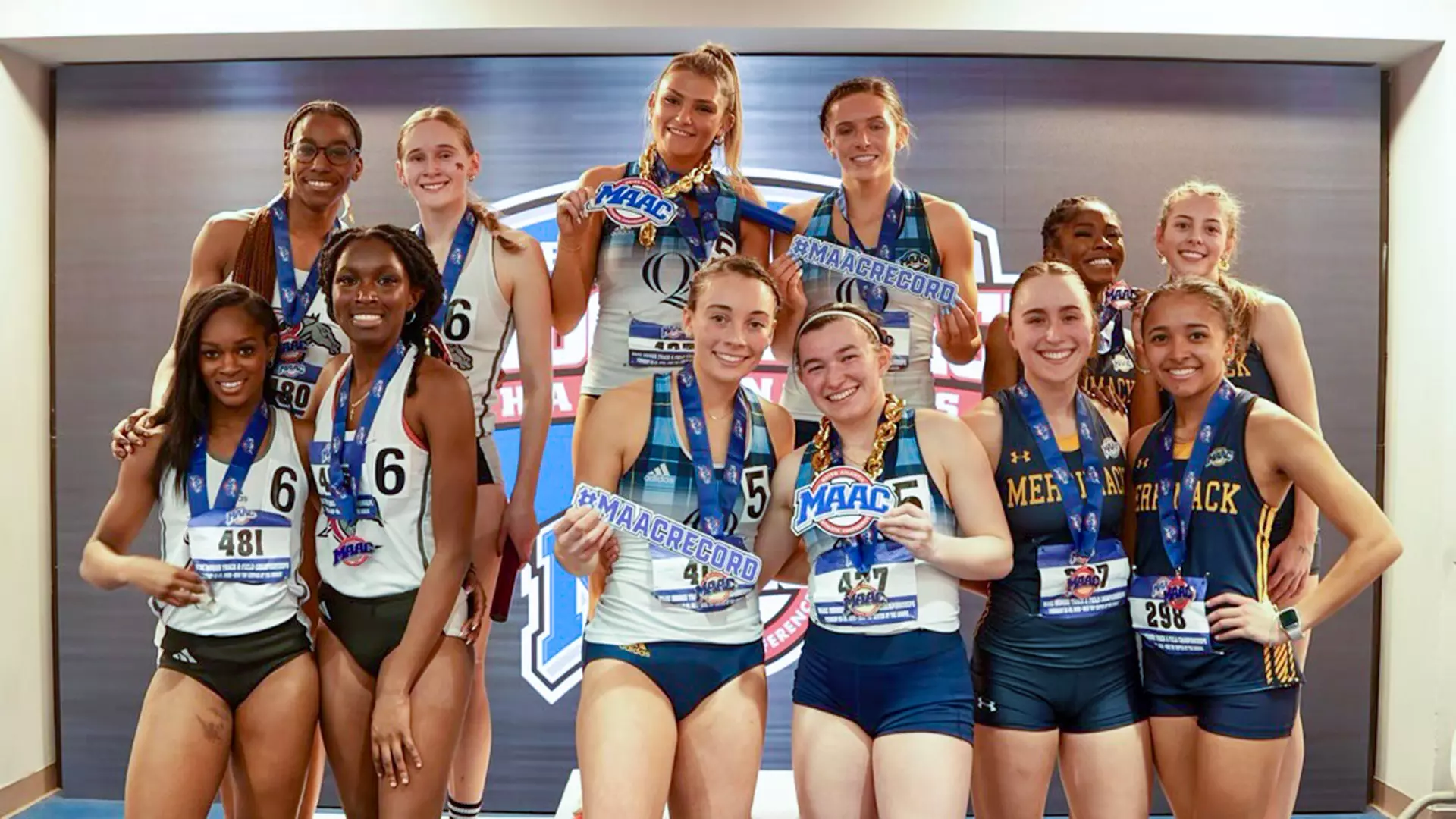By Cameron Levasseur and Jake Baskin
The ECAC Hockey men’s tournament kicked off Friday, with the bottom eight seeds gearing up for the single-elimination opening round. No. 1 Quinnipiac — Cleary Cup champions for the fifth-straight season — earned a bye into the quarterfinals, as did No. 2 Clarkson, No. 3 Colgate and No. 4 Union.
With their seasons on the line, No. 8 Brown hosts No. 9 Princeton and No. 7 Harvard faces No. 10 RPI, while No. 5 Dartmouth battles No. 12 St. Lawrence and No. 6 Cornell meets No. 11 Yale.
As the fray begins, here are 15 players to watch in this year’s tournament:
Ayrton Martino | Sr. | F | Clarkson
After not reaching double-digit goals in his first three seasons with Clarkson, Martino has become one the nation’s most dangerous scorers seemingly overnight. His 23 goals leads the ECAC and is tied for second in the NCAA. Factor in his 45 points and Martino is a shoe-in to be the first Golden Knight to win ECAC Player of the Year since Todd White in 1997.
Ayrton Martino (#TexasHockey📷 '21 73rd) has been carving up the ECAC this season. 20P in his last 10GP, 14P in last 5GP.
— Daniel Gee (@DanielGScouting) March 4, 2025
A lightning-quick processor, Martino's physical skill/habits have taken a step. A true dual threat attacker, but his vision separates him. @ClarksonMHockey pic.twitter.com/ockWeanPZr
Ian Shane | Sr. | G | Cornell
Shane makes this list not for his regular season performance, but for what he’s left on the table this season. The reigning ECAC Goaltender of the Year, Shane — along with the conference preseason favorite Big Red — has fallen off a cliff. His .923 save percentage in 2023-24 has dropped to .891, second-worst in the nation among netminders with over 20 starts. If Shane finds his form in the postseason, it’s the first step for No. 6 Cornell to shake off a rough regular season and look to repeat as ECAC champions in two weeks.
Ryan St. Louis | Jr. | F | Brown
Brown enters the ECAC Tournament on a tear, winning eight of its last 10 games and steamrolling into the eight seed and home ice advantage in the opening round. The Bears’ most dynamic player through this stretch? St. Louis, who has 15 points since Jan. 17. His 1.25 points per game sits second in the conference, despite missing nine games with two separate injuries.
St. Louis gets the Bears on the board!#EverTrue pic.twitter.com/7JY9CtCNxz
— Brown Men's Hockey (@BrownU_MHockey) March 2, 2025
Cooper Moore | Sr. | D | Quinnipiac
In his second year with the Bobcats after transferring from North Dakota, Moore has joined a lineage of shutdown No. 1 defenseman at Quinnipiac. Like Jayden Lee before him and Zach Metsa before that, Moore is the focal point of a Bobcats’ defense that is again among the best in the nation. He’s not a dynamic offensive threat (12 points in 33 games), but Moore’s elite defensive instincts break up plays before they become dangerous and allow Quinnipiac to quickly turn plays back up ice. With graduate student Aaron Bohlinger out for the remainder of the season with a knee injury, more responsibility now falls on the veteran Moore to lock down the top lines of opposing teams.
Trey Taylor and Tristan Sarsland | Jrs. | D | Clarkson
Much like the Clarkson women’s top defensive pairing of Nicole Gosling and Haley Winn, the Golden Knights’ men’s duo of Taylor and Sarsland should be spoken of in the same breath. They have 25 and 21 points on the season, respectively, and are a nightmare for offenses to beat in the defensive zone. Taylor, the reigning ECAC Defensive Defenseman of the Year, is making a strong case to repeat in 2025, and Sarsland’s +11 plus/minus is sixth among defensemen in the conference.
CJ Foley | So. | D | Dartmouth
An All-ECAC Second Teamer as a freshman, Foley has taken the next step in his second season with Dartmouth. His 11 goals and 29 points lead the Big Green and sit top five among defensemen in the country, driving an offense that spent half the season without its top forward, Luke Haymes.
The beautiful GWG from CJ Foley but in slow mo #GoBigGreen | #TheWoods🌲 pic.twitter.com/vEjFIovp95
— Dartmouth Men's Hockey (@Dartmouth_MIH) January 12, 2025
Brendan Gorman | Jr. | F | Princeton
In his third season with the Tigers, Gorman pushes the pace as Princeton’s top-line center. He leads the Tigers in goals (12) and points (26) this season. His relentless motor helps regulate the play of a hot and cold program who’s conference tournament run could be anywhere from one day to three weeks long.
Jeremy Wilmer | Jr. | F | Quinnipiac
A high-scoring winger in his two years at Boston University, Wilmer has kept his scoring pace up in his first year at Quinnipiac. The Bobcats have five players in the top 10 in scoring, and Wilmer’s 38 points are second only to Martino for the conference lead. Quinnipiac is the highest-scoring team in the conference this season, and the 5-foot-8 spark plug has proven to be the leader of the committee.
Luke Haymes | Jr. | F | Dartmouth
Two years ago, Dartmouth was at the bottom of the conference standings. Now, the Big Green are an ECAC contender and Haymes is a major reason why. The team’s leading scorer in 2023-24, he missed the first part of this season with a broken hand but has played very well since returning, molding his game into that of a physical two-way center. He is expected to be pursued by many NHL teams at the conclusion of Dartmouth’s season.
That's three straight games that Luke Haymes has opened the scoring for the Big Green!
— Dartmouth Men's Hockey (@Dartmouth_MIH) February 1, 2025
Gameday Central: https://t.co/AqdjRCz3ma#GoBigGreen | #TheWoods🌲 pic.twitter.com/UF2rQ9oanR
Brett Chorske | Sr. | F | Colgate
Chorske has had his breakout season as a senior, and is currently top five in the conference in both goals (15) and points (33). The center from Minnesota is an excellent puck handler and passer, and has been driving the offense for the Raiders in 2024-25. Listed at 6-foot-7, 215 pounds, he provides a size component that few in the country can rival. If Colgate is to win the ECAC, Chorske is going to have to be the best player in the conference tournament.
John Prokop | Jr. | D | Union
Union finished fourth in the regular season standings under third-year coach Josh Hauge, and the team’s leader on the back end is Prokop, a second-team All-American from a year ago. Prokop is second among ECAC defenseman in scoring to Dartmouth’s Foley and his offensive output over his three years in Schenectady means opposing coaches have to gameplan for him. He has also taken major steps on his own end, in particular taking an expanded role on the penalty kill, that has allowed the talented Union forwards to take chances offensively.
Jack Ricketts | Sr. | F | Quinnipiac
Just two ECAC forwards have hit the 20-goal threshold in the regular season. One is Clarkson’s Martino. The other is Ricketts, a graduate transfer and former captain at Holy Cross. The left-winger from Oakville, Ontario, really picked up his scoring in the past month, with nine of his 20 goals coming on or after Jan. 31. While the Bobcats get most of their recognition for their strong defense in recent years, their balanced scoring output has also been key to their fifth-consecutive Cleary Cup title. No one has been hotter down the stretch for them than Ricketts.
What a play by Pelosi and Ricketts finishes it off to make it a one-goal game!#BobcatNation x #NCAAHockey pic.twitter.com/oPlD92zLq5
— Quinnipiac Men's Ice Hockey (@QU_MIH) March 1, 2025
Mick Thompson | Fr. | F | Harvard
Thompson is Harvard’s scoring leader., A freshman, he was recently named the Hockey Commissioners Association’s National Rookie of the Month. The 21-year-old had four of his 10 goals and 12 of his 26 total points in February. The Crimson struggled in 2023-24 after most of their stars of the 2022-23 team turned pro and have remained middle of the pack this year. While the team is still in a rebuilding period, Thompson is a piece that Harvard can build around for the future.
Jakob Lee | Grad. | F | RPI
2024-25 was another rocky regular season for No. 10 RPI, which faces a steep climb to reach postseason success. If they hope to replicate the first round upset they pulled off last March, the Engineers will need the offensive production of Lee, who’s 12 goals leads the team. RPI has won six games since the start of the new year and Lee scored in five of them, including both o
f the team’s goals in a 2-1 win over Dartmouth on Feb. 21.
Lawton Zacher | So. | G | Brown
Zacher, a second-year starter from Buffalo, New York, is second among qualified conference goaltenders with a .920 save percentage, second to just Quinnipiac’s Matej Marinov’s .922. Handling the bulk of starts for the Bears this season, he was the conference’s only representative among the 10 semifinalists for the Mike Richter Award for Division I’s top goaltender. Postseason hockey, particularly in defensive-oriented conferences such as the ECAC, magnifies the importance of good goaltending. If Zacher gets hot, Brown could put a scare into the top teams in the conference.


















